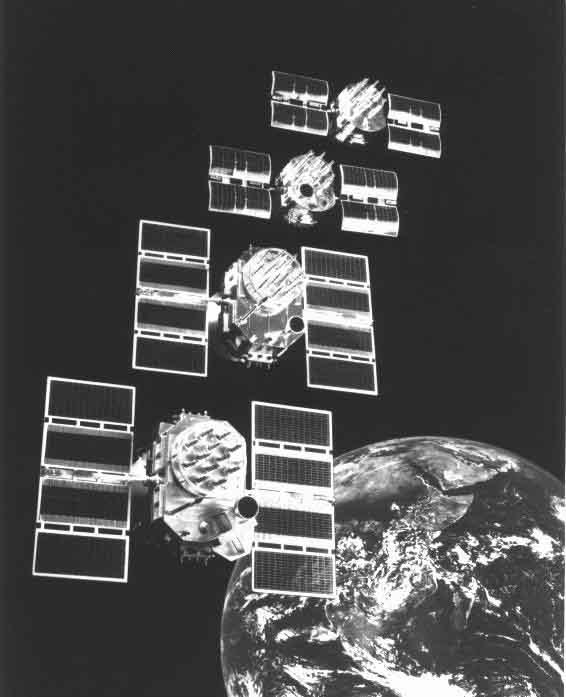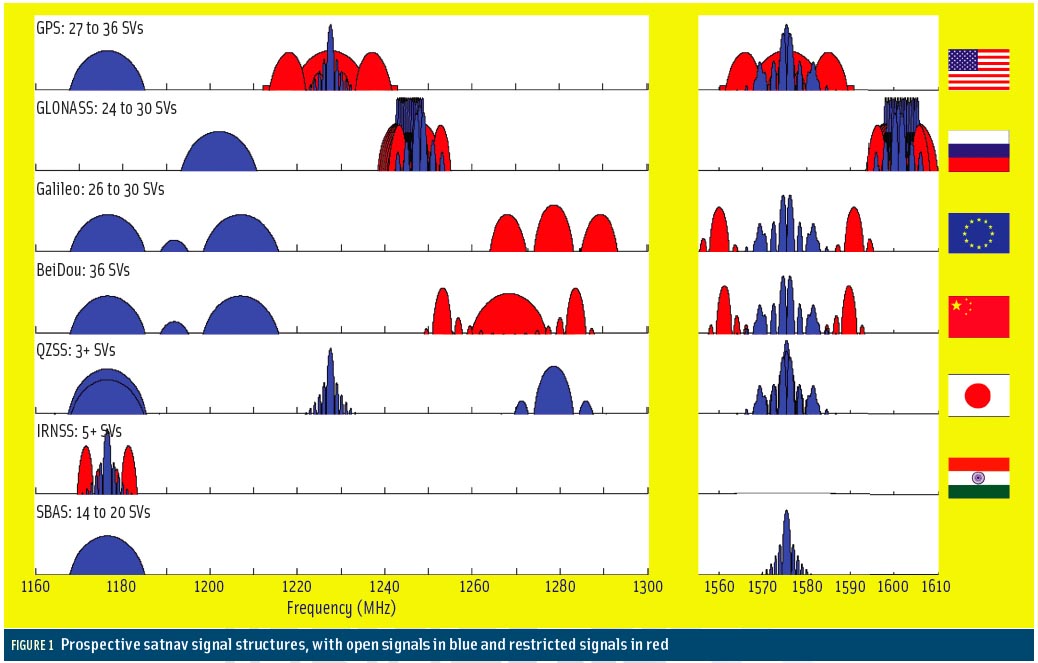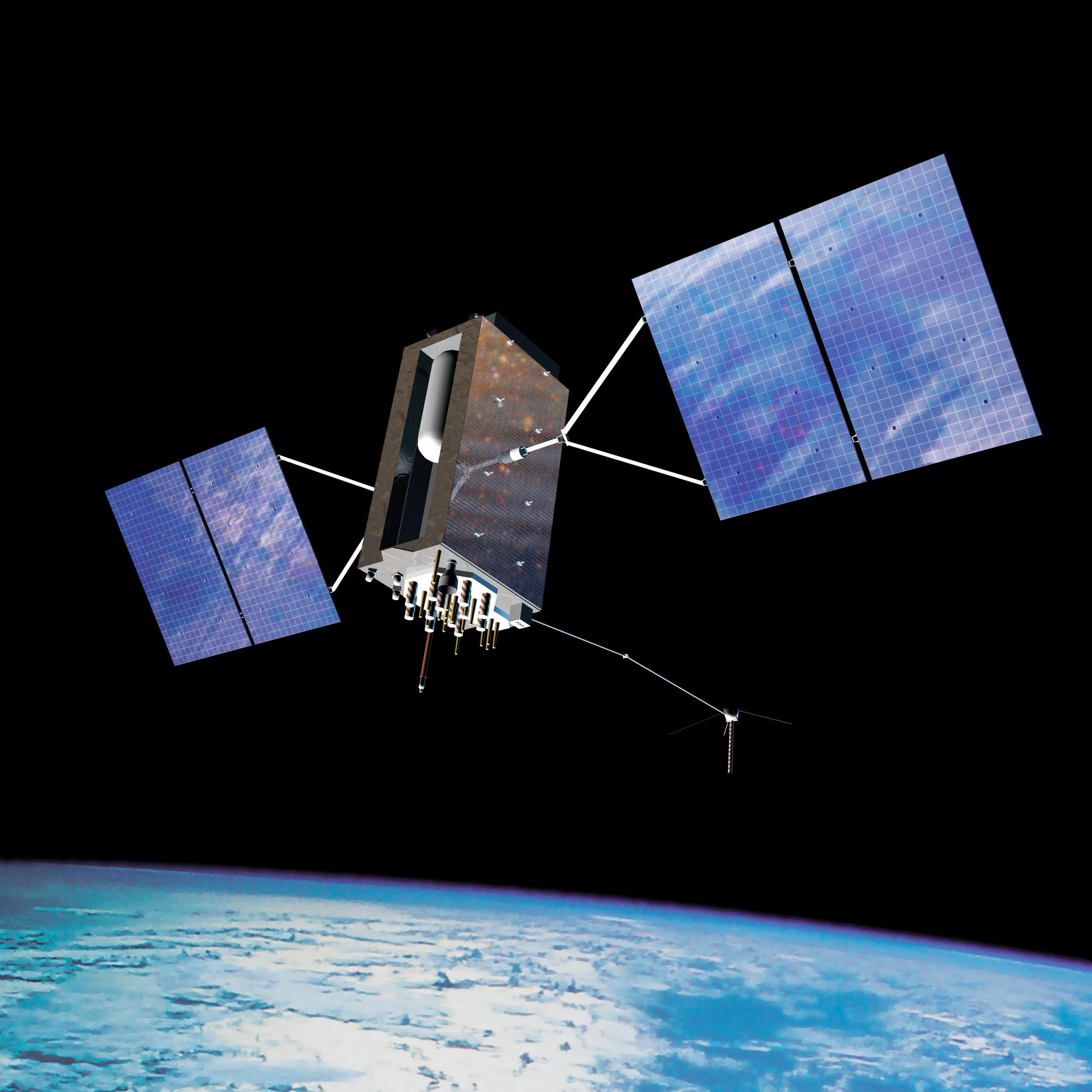 (From top) GPS Block I, Block IA, Block II, Block IIA
(From top) GPS Block I, Block IA, Block II, Block IIAA 20-year-old GPS Block IIA satellite designated as space vehicle number 23 (SVN23) is setting new records in longevity among the durable spacecraft of the Global Positioning System.
Built by Boeing (formerly Rockwell Corporation) and launched on November 26, 1990, SVN23 has operated longer than any other GPS satellites — far exceeding its design life of 7.5 years. Set healthy shortly after launch for navigation and timing use, the GPS Directorate (formerly GPS Wing) at Los Angeles Air Force Base predicts that the satellite will last another 12–18 months.
A 20-year-old GPS Block IIA satellite designated as space vehicle number 23 (SVN23) is setting new records in longevity among the durable spacecraft of the Global Positioning System.
Built by Boeing (formerly Rockwell Corporation) and launched on November 26, 1990, SVN23 has operated longer than any other GPS satellites — far exceeding its design life of 7.5 years. Set healthy shortly after launch for navigation and timing use, the GPS Directorate (formerly GPS Wing) at Los Angeles Air Force Base predicts that the satellite will last another 12–18 months.
The satellite’s operation on orbit, however, hasn’t been continuous. In its first year of service, a flaw appeared in the satellite’s solar array drive, the mechanism that keeps the arrays trained toward the sun. At that point, the 2nd Space Operational Squadron (2SOPS) in Colorado Springs began to manually slew the solar arrays.
After 14 years of manual control of the solar array drive, 2SOPS decided that technique had become too problematic and put the satellite in standby mode. About three years later, 2SOPS decided to try the satellites auto track feature again. Much to the surprise of everyone, the satellite functioned adequately and even improved over time.
To this day, SVN23 still has all four reaction wheels operating and one of the best atomic clocks in the remaining group of GPS IIA satellites, according to the U.S. Air Force operators.
“Boeing has a solid history of delivering satellites that live beyond their contractual lives,” says Craig Cooning, vice president and general manager of Boeing Space and Intelligence Systems. A rubidium clock on Boeing’s newest GPS satellite, a Block IIF spacecraft (SVN62/PRN25) that entered service on August 26, is performing the best in the history of the entire GPS fleet, according to Air Force controllers, and is roughly the same as the passive hydrogen maser on board Galileo’s GIOVE-B spacecraft. (See accompanying figure.)
The GPS constellation current contains 31 operational satellites on orbit: 11 IIA, 12 IIR, 7 IIR-M and 1 IIF. The IIR-M satellites have additional modernized signals, one on L1 frequency and two on L2. The next IIF launch is expected to take place by June 2011.





